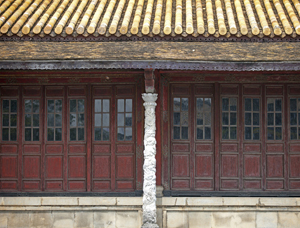What's New:
September 5, 2011
"For The Love of a Child"
Second Annual Benefit for the children of Mission 2012. Saturday October 22, 2011 at 6PM. Featuring "The Friends Music Group". Purchase your tickets HERE
Current News:
September 5, 2011
Summer 2012 Application
Save the dates: Summer Mission 2012 will be July 13-28. Application will be available online October 1, 2011
Thua Thien Hue - Central Vietnam, Imperial City
In June 1802 Nguyễn Phúc Ánh took control of Vietnam and proclaimed himself Emperor Gia Long. His rule was recognized by China in 1804.
Gia Long confided with geomancers to decide which was the best place for a new palace and citadel to be built. After the geomancers had decided on a suitable site in Hue, in 1804 building began. Thousands of workers were forced to produce a wall and moat, 10 kilometer long. Initially the walls were earthen, but later these earthen walls were replaced by stone walls, 2 meters thick.
Hue served as the capital of unified Vietnam from 1802 until 1945. In addition to being the seat of the Nguyen dynasty throne, the imperial city held sway over the nation's cultural and religious life, making it a natural for UNESCO World Heritage status. Even today, this medium-size town straddling the Perfume River remains a center of education.
Surrounded by a thick, six-mile-long wall, the massive Citadel on the north bank dominates the cityscape. Inside is the fortified and moated Imperial City, a city-within-a-city containing the ornate wooden Thai Hoa Palace, Halls of the Mandarins, a tranquil pond, and the "pleasure pavilion" of Dien Tho, the Queen Mother's residence. The streets inside the fortress are laid out in a grid pattern and are perfect for exploring on a bicycle.
The wooded hills south of town are dotted with the mausoleums of the Nguyen kings, including the frangipani-scented Tomb of Emperor Tu Duc, who reigned 1843–83. Thien Mu Pagoda, whose seven-story octagonal tower is a national icon is located just up the Perfume River.
 |
 |
 |
 |














